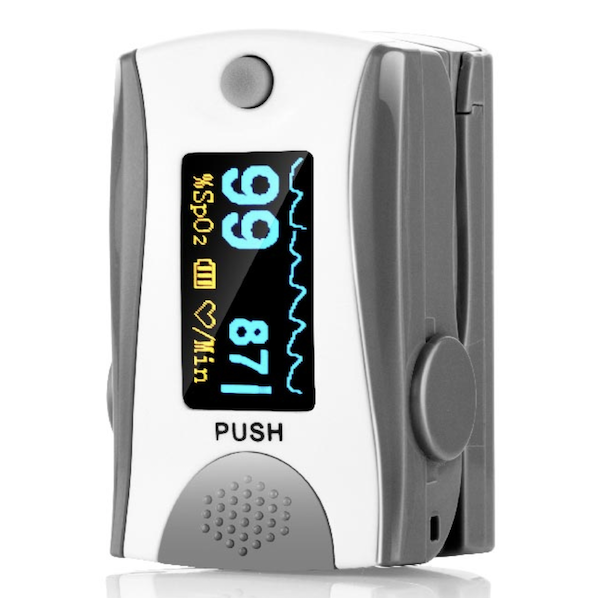
Just as a thermometer helps us tell when the body's temperature is too high, a pulse oximeter could tell us if we're developing pneumonia. It is therefore a small tool that allows simple and continuous monitoring of the heartbeat and the percentage level of oxygen saturation in the blood. This percentage allows the measurement of the effectiveness of oxygen transport, therefore primarily of respiration. A particularly important figure to monitor for subjects suffering from heart failure, respiratory and lung diseases, bronchial asthma and sleep apnea or for use during sports activities at altitude.
How does it work
The operation of the oximeter is based on the different properties of absorption of light radiation of hemoglobin bound to oxygen and free hemoglobin. The first, also called oxyhemoglobin, absorbs in the infrared spectrum, while the second in the red. On the pulse oximeter probe, two diodes emit light (one in red, at 660 nanometers, and one in infrared, at 940 nanometers), are positioned on a branch of the clip, and on the other a sensor. When the oximeter is turned on, the light emitted by the diodes passes through the organic tissues and is recaptured by the sensor: based on the difference between the light emitted and that recorded, the computer obtains the percentage of hemoglobin linked to oxygen. Under normal conditions this value is greater than 95%.
When the number marked by the oximeter is less than 95% we find hypoxemia, which according to the degree is defined as mild (91-94%), moderate (86-90%) and severe (<85%). This condition can be an indication of a problem with the respiratory function and a potential risk to the person's health, for example an ongoing pneumonia, such as the one that can develop if you contract Covid 19.
